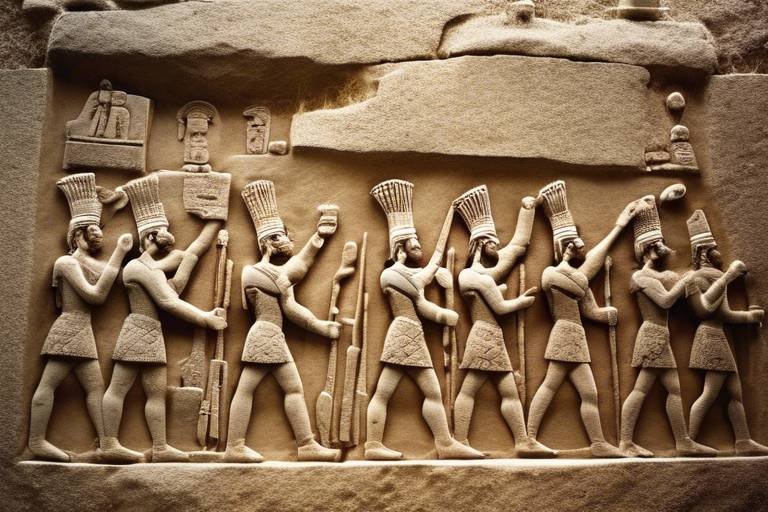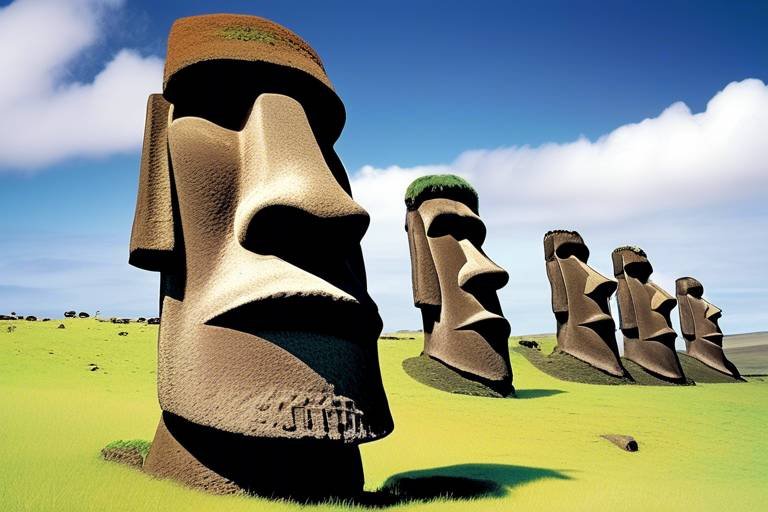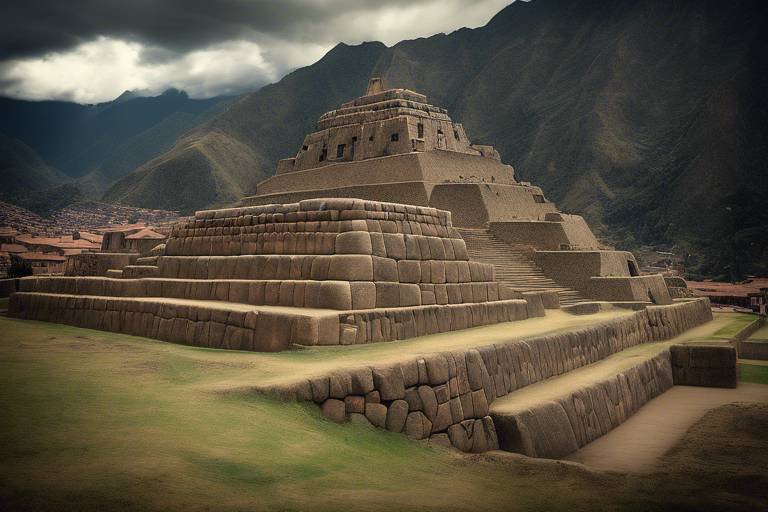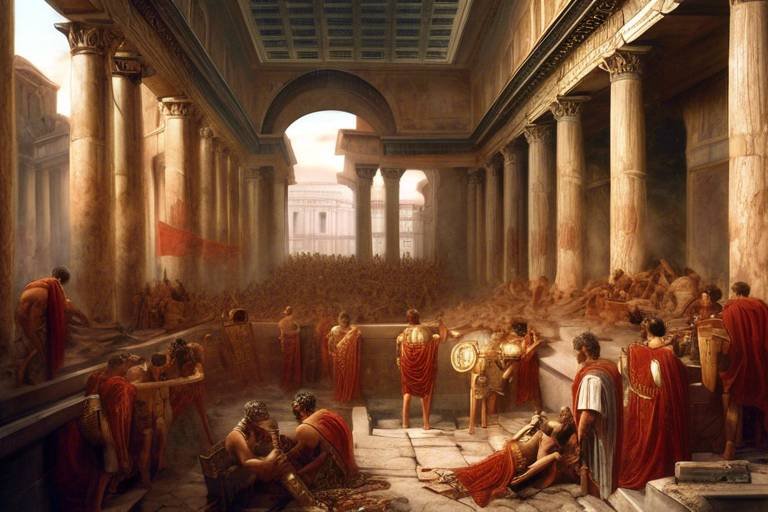The Rise and Fall of the Gupta Empire - A Case Study
The Gupta Empire, once a formidable dynasty in ancient India, witnessed a journey filled with both glory and downfall. Its rise to power and subsequent decline offer a fascinating case study of the ebb and flow of imperial strength. Understanding the factors that propelled the empire to prominence and those that eventually led to its unraveling provides valuable insights into the complexities of governance, economics, and societal dynamics in ancient India.
Founded in the 4th century CE in northern India, the Gupta Empire took root in Pataliputra under the visionary leadership of Chandragupta I. This marked the beginning of a period of expansion and consolidation of power, as the empire gradually extended its influence over neighboring territories, laying the groundwork for its future dominance.
The zenith of the Gupta Empire came during the reigns of illustrious rulers such as Samudragupta and Chandragupta II. This era, often referred to as the Golden Age of India, was characterized by remarkable advancements in various fields, including art, science, and literature. The empire's cultural and intellectual achievements during this period continue to inspire awe and admiration.
Central to the Gupta Empire's success was its efficient administrative and political structure. This system enabled effective governance, fostering economic prosperity and social stability across the empire's vast domains. The meticulous organization of governance played a vital role in maintaining order and coherence within the empire.
Economic prosperity was another hallmark of the Gupta Empire, driven by robust agricultural practices, flourishing trade networks, and skilled craftsmanship. Situated strategically along major trade routes, the empire engaged in lucrative commerce with distant lands, enriching its coffers and facilitating cultural exchange on a grand scale.
However, the Gupta Empire's decline was inevitable, marked by a series of challenges that eroded its once unassailable position. Invasions by the Hunas, internal conflicts, and the rise of weak successors weakened the empire's foundations, leading to a gradual unraveling of central authority and economic instability. These factors collectively contributed to the empire's eventual downfall.
Despite its fall, the Gupta Empire's legacy endures in the annals of Indian history. The empire's contributions to art, architecture, mathematics, and philosophy have left an indelible mark on the cultural heritage of the Indian subcontinent, shaping the intellectual landscape for generations to come.
The historiography of the Gupta era offers a nuanced understanding of the empire's significance and impact, shedding light on the evolving interpretations of its legacy over time. Scholars continue to delve into the complexities of studying ancient Indian civilizations, unraveling the layers of history that define the Gupta Empire's place in the tapestry of India's past.
Reflecting on the rise and fall of the Gupta Empire provides valuable lessons for contemporary society. By examining the empire's trajectory, we can glean insights into the challenges of governance, the dynamics of power, and the impermanence of empires. The Gupta Empire stands as a testament to the complexities of empire-building and the enduring lessons it offers for understanding the ebbs and flows of political authority.
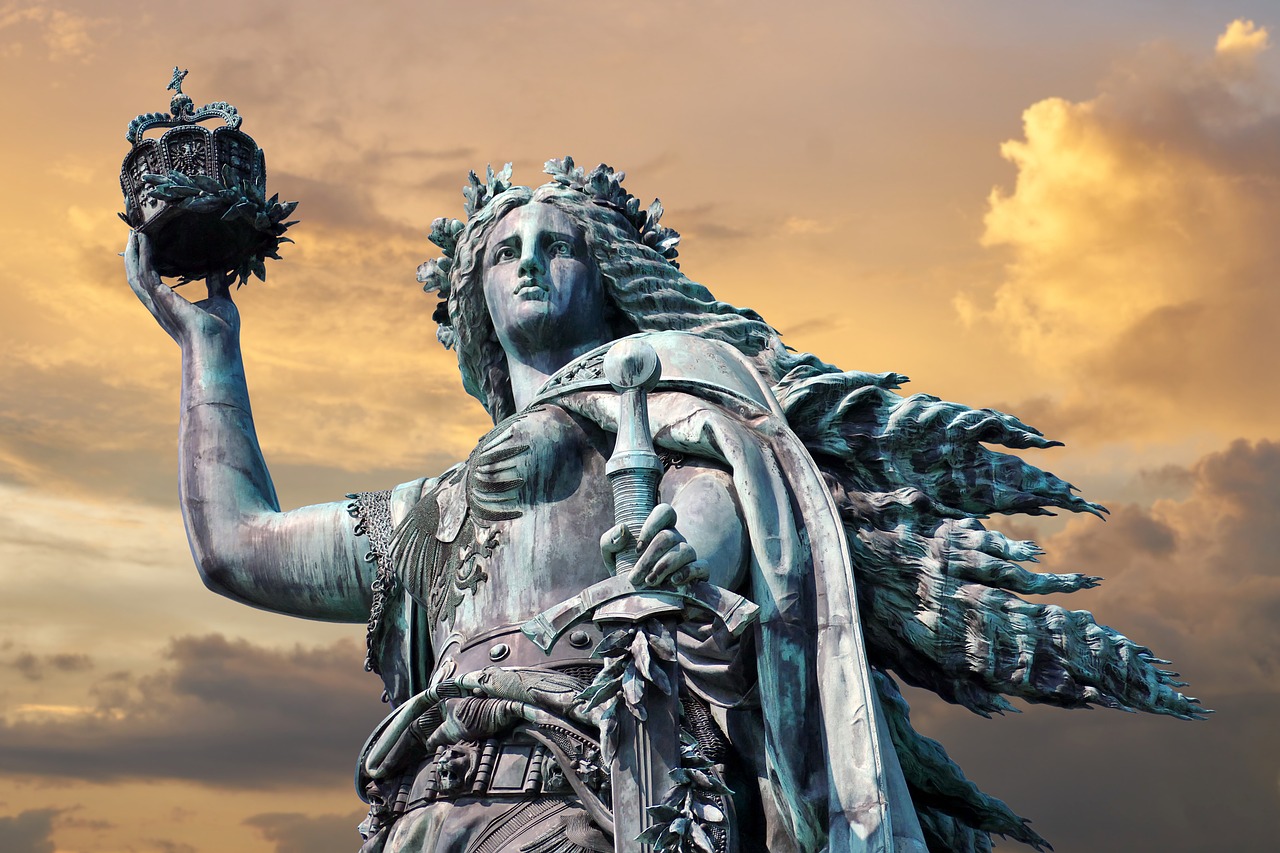
Origins and Early Expansion
The Gupta Empire, a formidable and prosperous dynasty, emerged in the 4th century CE in northern India, with its capital established at Pataliputra. Led by Chandragupta I, the empire embarked on a journey of expansion, gradually consolidating power and influence over neighboring regions. This early phase marked the foundation of what would later become a significant force in ancient Indian history.
As the Gupta Empire grew, its territorial reach expanded under the rule of visionary leaders like Samudragupta and Chandragupta II. This period witnessed a flourishing of art, science, and literature, propelling the empire to its zenith. The Guptas' rule during this era earned them the prestigious title of the Golden Age of India, a testament to their cultural and intellectual achievements.
Central to the Gupta Empire's success was its efficient administrative system, characterized by a well-structured governance framework. This system not only facilitated effective decision-making but also contributed to the economic prosperity that defined the empire's reign. The political structure of the Gupta Empire played a pivotal role in maintaining stability and order across its vast territories, ensuring a cohesive and organized administration.
One of the key pillars of the Gupta Empire's strength was its thriving economy, supported by robust agricultural practices, vibrant trade networks, and skilled craftsmanship. Situated strategically along major trade routes, the empire engaged in commerce with distant lands, fostering economic prosperity and enabling cultural exchange. This economic vibrancy not only enriched the empire but also solidified its position as a regional powerhouse.
However, despite its initial success and prosperity, the Gupta Empire faced a gradual decline due to a combination of factors. Invasions by the Hunas, internal strife, and weak successors weakened the empire's foundations, leading to a loss of central authority and economic instability. These challenges ultimately contributed to the downfall of the once-mighty Gupta Empire, marking the end of an illustrious chapter in Indian history.
Nevertheless, the legacy of the Gupta Empire endures, leaving a profound impact on Indian history and culture. The empire's contributions to art, architecture, mathematics, and philosophy continue to influence and inspire generations, shaping the cultural heritage of the Indian subcontinent. Despite its eventual decline, the Gupta Empire's imprint on the annals of history remains indelible.

Golden Age of the Guptas
The Golden Age of the Guptas was a period of unparalleled prosperity and cultural flourishing for the Gupta Empire. Under the rule of illustrious monarchs such as Samudragupta and Chandragupta II, the empire experienced a renaissance in art, science, and literature, earning it the prestigious title of the Golden Age of India.
During this golden era, the Gupta Empire witnessed remarkable advancements in various fields, including architecture, sculpture, and mathematics. The Ajanta and Ellora caves stand as enduring testaments to the artistic achievements of the time, showcasing intricate carvings and vibrant frescoes that continue to captivate visitors to this day.
Furthermore, the Gupta period saw significant developments in science and mathematics, with scholars like Aryabhata making groundbreaking contributions to astronomy and trigonometry. The decimal numeral system, including the concept of zero, revolutionized mathematical calculations and laid the foundation for modern mathematics.
Trade and commerce thrived during the Golden Age, facilitated by the empire's strategic location along key trade routes. The Gupta rulers promoted economic growth through policies that encouraged agricultural productivity and supported a flourishing trade network that extended to distant lands such as Southeast Asia and the Mediterranean.
Education and scholarship also flourished during this period, with renowned centers of learning like Nalanda and Taxila attracting students and scholars from far and wide. The Gupta Empire's patronage of education and intellectual pursuits fostered a climate of innovation and creativity that propelled Indian civilization to new heights.
In conclusion, the Golden Age of the Guptas represents a pinnacle of cultural and intellectual achievement in ancient India. The legacy of this period continues to inspire admiration and awe, serving as a testament to the enduring impact of the Gupta Empire on the cultural heritage of the Indian subcontinent.

Golden Age
The Golden Age of the Gupta Empire, spanning from the reigns of rulers like Samudragupta and Chandragupta II, was a period of unparalleled prosperity and cultural flourishing in ancient India. It was a time when the empire experienced remarkable advancements in various fields, solidifying its reputation as the of India.
Art and architecture thrived during this era, with the construction of magnificent temples, sculptures, and cave art that showcased the empire's rich cultural heritage. The famous Ajanta and Ellora caves stand as enduring testaments to the artistic prowess of the Guptas, reflecting the spiritual and aesthetic values of the time.
In the realm of science and mathematics, the Gupta Empire made significant contributions that continue to influence modern knowledge. The concept of zero, the decimal system, and advancements in astronomy and metallurgy are just a few examples of the empire's intellectual achievements that laid the foundation for future discoveries.
Furthermore, literature flourished under the patronage of Gupta rulers, with scholars like Kalidasa producing timeless works of poetry and drama. The Sanskrit language reached new heights of refinement and eloquence, becoming a symbol of cultural sophistication and literary excellence.
Trade and commerce also thrived during the Golden Age, as the Gupta Empire established extensive trade networks that connected India to distant lands. The influx of wealth from trade routes bolstered the economy, allowing for the development of urban centers and the growth of a prosperous merchant class.
Overall, the Golden Age of the Gupta Empire was a period of remarkable achievement and innovation that left an indelible mark on the history of India. It was a time of intellectual enlightenment, artistic splendor, and economic prosperity that continues to inspire awe and admiration to this day.

of India.
The Golden Age of the Guptas was a remarkable period in the history of ancient India. It was a time of unprecedented cultural flourishing and intellectual achievements that left a lasting impact on the Indian subcontinent. The Gupta Empire's patronage of arts and sciences led to significant advancements in fields such as mathematics, astronomy, and literature. The exquisite Gupta artistry, reflected in the intricate sculptures and vibrant paintings, continues to captivate art enthusiasts worldwide.
Moreover, the Gupta Empire's architectural marvels, including the iconic Ajanta and Ellora caves, stand as testaments to the grandeur and sophistication of Indian craftsmanship during that era. The intricate carvings and detailed frescoes found in these sites showcase the artistic prowess and cultural richness of the Gupta civilization.
Furthermore, the Gupta era witnessed a flourishing of trade and commerce, with the empire's extensive trade networks extending to regions far beyond its borders. The lucrative trade routes facilitated cultural exchanges and the spread of ideas, contributing to the cosmopolitan nature of Gupta society. The Gupta Empire's economic prosperity was fueled by its agricultural innovations, efficient taxation system, and skilled artisans who produced exquisite goods coveted by traders from distant lands.
Additionally, the Gupta Empire's political and administrative structure played a crucial role in maintaining stability and fostering a sense of unity among its diverse subjects. The empire's decentralized governance system allowed local rulers a degree of autonomy while still acknowledging the central authority of the Gupta monarch. This balance of power contributed to the empire's longevity and resilience in the face of external threats and internal challenges.
In conclusion, the legacy of the Gupta Empire as the Golden Age of India endures as a testament to the heights of cultural, intellectual, and economic achievements that ancient Indian civilization reached. The Gupta era serves as a beacon of inspiration for future generations, reminding us of the transformative power of art, knowledge, and innovation in shaping the course of history.

Administrative and Political Structure
The administrative and political structure of the Gupta Empire was characterized by a well-organized system that facilitated efficient governance and stability. At the helm of the empire was the emperor, who held supreme authority and was supported by a council of ministers responsible for overseeing various aspects of administration. The empire was divided into provinces, each governed by appointed officials who reported to the central administration.
Key administrative functions such as tax collection, law enforcement, and infrastructure development were managed at the local level, ensuring effective implementation of policies and regulations. The Gupta rulers emphasized the importance of maintaining law and order, which contributed to the overall stability of the empire.
Furthermore, the Gupta Empire had a sophisticated bureaucracy that handled day-to-day administrative tasks, including record-keeping, communication, and decision-making. The administrative structure was designed to streamline processes and promote accountability among officials, enhancing the overall efficiency of governance.
In terms of political structure, the Gupta Empire adopted a feudal system where land grants were given to nobles and local rulers in exchange for loyalty and military support. This decentralized system allowed for greater autonomy at the regional level while ensuring allegiance to the central authority.
Additionally, the Gupta rulers maintained diplomatic relations with neighboring kingdoms and empires, forging alliances through strategic marriages and treaties. This diplomatic prowess enabled the empire to expand its influence and establish trade networks, further enriching its political and economic power.

Economic Prosperity and Trade Networks
The Gupta Empire thrived on economic prosperity and well-established trade networks that played a pivotal role in its dominance and influence in ancient India. The empire's economic success was built on a foundation of diverse sources, including agriculture, trade, and craftsmanship. The fertile lands under Gupta control enabled robust agricultural production, providing sustenance for the empire's population and surplus for trade. This agricultural surplus not only fueled the economy but also supported the growth of urban centers and the development of specialized industries.
Trade was a cornerstone of the Gupta Empire's economic strength, facilitated by its strategic location along major trade routes that connected India to Central Asia, the Middle East, and Southeast Asia. The empire actively engaged in both overland and maritime trade, exchanging goods such as spices, textiles, precious stones, and luxury items with distant lands. This extensive trade network not only brought wealth and exotic goods to the Gupta Empire but also fostered cultural exchange and the spread of ideas and technologies.
Furthermore, the Guptas' patronage of craftsmanship and artistry contributed significantly to their economic prosperity. Skilled artisans and craftsmen produced exquisite goods, including intricate metalwork, sculptures, textiles, and jewelry, which were highly sought after both within the empire and in foreign markets. The Gupta Empire's support for the arts not only boosted the economy but also elevated the cultural prestige of the dynasty, attracting admiration and envy from neighboring kingdoms.
In addition to fostering economic prosperity, the Gupta Empire's trade networks played a crucial role in diplomatic relations and political alliances. Through trade agreements and diplomatic missions, the Guptas solidified alliances with neighboring kingdoms and established themselves as a dominant force in the region. The wealth generated from trade not only enriched the empire but also provided resources for military campaigns, infrastructure development, and the patronage of scholars and intellectuals.
Overall, the Gupta Empire's economic prosperity and well-developed trade networks were essential pillars of its success and influence in ancient India. The empire's ability to harness agricultural resources, engage in lucrative trade, and promote artistic and cultural achievements not only fueled its growth and prosperity but also cemented its legacy as a beacon of civilization in the Indian subcontinent.

Decline of the Gupta Empire
The decline of the Gupta Empire marked a tumultuous period in its history, characterized by a series of internal and external challenges that weakened its foundations. One of the key factors contributing to the empire's downfall was the invasions by the Hunas, a nomadic Central Asian tribe that posed a significant military threat. These invasions not only inflicted damage on the Gupta territories but also disrupted trade routes and economic stability.
Furthermore, the succession of weak rulers after the illustrious reign of Chandragupta II also played a crucial role in the empire's decline. Inadequate leadership and internal power struggles weakened the central authority of the empire, leading to a loss of cohesion and effectiveness in governance. This internal strife further exacerbated the vulnerabilities of the Gupta Empire.
As the Gupta Empire faced external invasions and internal turmoil, economic instability began to take its toll. The once-thriving trade networks that had fueled the empire's prosperity started to falter, impacting agricultural production and artisanal activities. The disruption of economic activities, coupled with the loss of centralized control, contributed to a gradual decline in the empire's overall wealth and influence.
Despite efforts to resist external threats and internal challenges, the Gupta Empire struggled to maintain its grip on power. The fragmentation of authority among regional governors and the weakening of the imperial administration further accelerated the empire's decline. By the 6th century CE, the Gupta Empire had fragmented into smaller kingdoms, marking the end of its centralized rule and the beginning of a new political landscape in India.

Legacy of the Gupta Empire
The Gupta Empire, despite its eventual decline, left an indelible mark on the history of India, shaping the cultural heritage of the subcontinent for centuries to come. One of the most significant legacies of the Gupta Empire is its profound impact on the fields of art and architecture. The period of Gupta rule witnessed a flourishing of artistic expression, with the creation of exquisite sculptures, intricately designed temples, and magnificent palaces that showcased the empire's wealth and sophistication.
Furthermore, the Guptas made notable contributions to the field of mathematics, with scholars like Aryabhata making groundbreaking discoveries in areas such as algebra, trigonometry, and astronomy. The concept of zero, a fundamental pillar of modern mathematics, is believed to have originated in India during the Gupta era, highlighting the empire's intellectual achievements and lasting influence on mathematical thought.
In addition to their artistic and scientific advancements, the Gupta Empire also played a pivotal role in the development of Indian philosophy. Philosophers and thinkers during this period delved into profound questions about the nature of existence, consciousness, and the self, laying the foundation for diverse philosophical schools that continue to shape Indian thought to this day.
Moreover, the architectural marvels built during the Gupta period, such as the iconic Ajanta and Ellora caves, stand as testaments to the empire's architectural prowess and aesthetic sensibilities. These intricate cave temples, adorned with exquisite paintings and sculptures, reflect the religious and cultural diversity of ancient India, providing insights into the spiritual beliefs and practices of the time.
Overall, the legacy of the Gupta Empire extends far beyond its political boundaries, encompassing a rich tapestry of artistic, intellectual, and philosophical achievements that continue to inspire and captivate scholars and enthusiasts around the world. The enduring influence of the Guptas serves as a testament to the empire's enduring legacy and enduring impact on the cultural landscape of India.

Historiography of the Gupta Era
Scholarly interpretations and historical accounts of the Gupta Empire have evolved over time, reflecting changing perspectives on its significance and impact. The historiography of the Gupta era offers insights into the complexities of studying ancient Indian civilizations.

Lessons from the Gupta Empire
The rise and fall of the Gupta Empire offer valuable lessons for understanding the dynamics of power, governance, and societal change. By delving into the history of this ancient dynasty, we can uncover insights that resonate even in modern times.
One key lesson from the Gupta Empire is the importance of strong leadership and effective governance. The empire thrived under capable rulers who implemented efficient administrative systems, ensuring stability and prosperity across their vast territories.
Furthermore, the Guptas' emphasis on economic prosperity and trade networks highlights the significance of fostering a thriving economy. By investing in agriculture, trade, and craftsmanship, the empire not only boosted its wealth but also facilitated cultural exchange and innovation.
Another crucial takeaway from the Gupta Empire's legacy is the impact of external threats and internal conflicts on the stability of a ruling dynasty. The invasions by the Hunas, coupled with weak successors and internal strife, gradually eroded the empire's central authority, leading to its eventual decline.
Moreover, the enduring contributions of the Gupta Empire to art, architecture, mathematics, and philosophy underscore the importance of cultural heritage and intellectual advancement. The empire's achievements continue to inspire generations, showcasing the lasting impact of promoting creativity and knowledge.
In essence, the rise and fall of the Gupta Empire serve as a historical narrative rich with lessons on leadership, economic resilience, security, and cultural legacy. By studying this ancient dynasty, we can glean valuable insights into the complexities of empire-building and the challenges of maintaining power over time.
Frequently Asked Questions
- What were the key factors that contributed to the rise of the Gupta Empire?
The Gupta Empire's rise to prominence was influenced by factors such as strong leadership, effective governance, and strategic alliances with neighboring regions. The empire's focus on economic prosperity, cultural development, and military expansion also played a significant role in its ascent to power.
- How did the Gupta Empire impact Indian society and culture?
The Gupta Empire made significant contributions to Indian society and culture, particularly during its Golden Age. The empire's support for the arts, sciences, and literature led to remarkable advancements in various fields, shaping the cultural heritage of the Indian subcontinent for centuries to come.
- What were the major challenges that led to the decline of the Gupta Empire?
The decline of the Gupta Empire was precipitated by a combination of external invasions, internal conflicts, and economic instability. The Hunas' invasions, weak leadership, and loss of centralized authority all contributed to the empire's gradual downfall over time.
- What is the lasting legacy of the Gupta Empire in Indian history?
Despite its decline, the Gupta Empire's legacy endures through its contributions to art, architecture, mathematics, and philosophy. The empire's achievements continue to influence and inspire generations, shaping the cultural identity of the Indian subcontinent.


